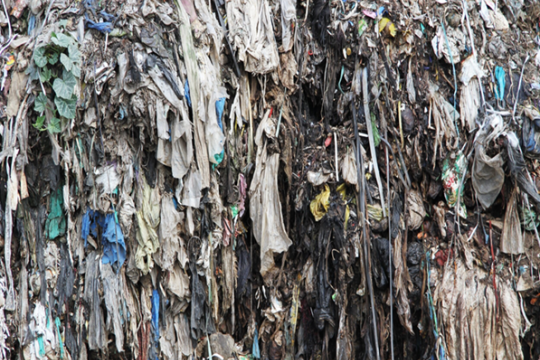Kenya’s second-hand clothing (SHC) industry is vital for affordable fashion and livelihoods, but contributes significantly to textile pollution, clogged drainage systems, and contamination of air and water sources. The growing health and environmental impact underscores the urgent need for structured waste management systems and a shift toward a circular economy.
In 2023, Kenya imported 198,000 tons of SHC valued at USD 186 million, representing a 100% increase from 2013. The bulk of this came from China, which supplied 32,000 tons worth USD 96 million, with additional imports from the United States (US), Canada, and the United Arab Emirates (UAE).
EfD Researcher Richard Mulwa presented the key findings on the Kenya textile to stakeholders during an online session on 9th May 2025, attended by over 30 participants.
From Mombasa port to market
The Second-Hand Clothing (SHC) industry supports more than 2 million livelihoods in Kenya, from importers and wholesalers to market traders, tailors, and transporters. Once clothing bales arrive at Mombasa Port, they move through a chain involving clearing agents, godowns, and wholesalers, before landing in informal markets like Gikomba, Toi, and City Stadium then to consumers.
Tailors and designers salvage damaged items, repurposing them into wearable fashion. But not all garments find a second life as they are too damaged to be resold.
What cannot be worn gets dumped or burned
These unusable clothes are either disposed of in landfills, dumping sites, or through incineration, contributing to pollution, or they are recycled/downcycled into products such as wiping rags, stuffing, filling for wheelbarrow wheels, or used as fuel for boilers.
Richard Mulwa emphasized that in Kenya, 20-50% of imported SHC is deemed unsellable and ultimately becomes waste. However, the Mitumba Association of Kenya contested this claim, asserting that only 2% actually becomes waste. Some contributing factors include the absence of a national textile recycling or collection system, a 35% import duty on recycling machinery, weak enforcement of Extended Producer Responsibility (EPR), and limited awareness among traders about available recycling options, among other challenges.
Nairobi River and Dandora dumpsite suffocated by textile waste
Improper disposal and burning of textile waste in Kenya have caused serious environmental and health issues. Burning synthetic fabrics releases toxic fumes, leading to respiratory problems, while harmful chemicals leach into soil and groundwater, contaminating vital resources.
Areas like the Nairobi River and Dandora dumpsite, especially near Gikomba Market, are heavily burdened with textile waste. Dandora alone receives around 4,000 tonnes of waste daily, contributing to environmental degradation and poor sanitation.
Findings from a survey involving local traders further highlight the consequences of unmanaged textile waste. Respondents reported recurring issues such as clogged drainage systems, heightened fire hazards, pest infestations, and psychological stress.
What can be done?
Despite the rising textile waste crisis, strategic action offers a strong opportunity for sustainable solutions. The key steps are, according to Richard Mulwa, to set up textile waste collection points in accessible places such as residential areas, churches, hospitals, and markets to encourage proper disposal. Supporting women-led businesses engaged in redesign, dyeing, and repair can help extend the life of textiles, while public awareness campaigns can promote better waste segregation practices.
There is also a need to establish recycling plants that convert textile waste into useful materials like insulation, mattress fillings, and construction products and collaborate with industries such as cement manufacturers, which can use textile waste as fuel. It is also crucial to invest in technologies that track waste and ensure safe disposal, especially of synthetic fabrics. Promotion of clothes swapping and donation programs was also identified as a practical solution.
Importantly, waste pickers and local community groups should be formally included in the recycling value chain to improve their working conditions and income. To support these efforts, policy and financial reforms are essential, including removing the 35% tax on recycling machinery, stronger enforcement of Extended Producer Responsibility (EPR), and access to venture capital, mentorship, and tax incentives for startups focused on textile recycling. These combined efforts unlock a more sustainable and inclusive textile economy for Kenya
"Import duties could also be introduced to limit the volume of imports, given the large volumes currently entering the country, which undermines efforts to develop local industries. While SHC trade businesses are likely to resist such measures and lobby against the imposition of these policies, it is essential to act, but of course through a consultative approach," said Richard Mulwa.
From an innovation perspective, a participant remarked that harnessing regenerative opportunities, such as use of pineapple and bananas to produce garments, holds significant potential both within Kenya and in the global competitive market.
By: Jane Maina
